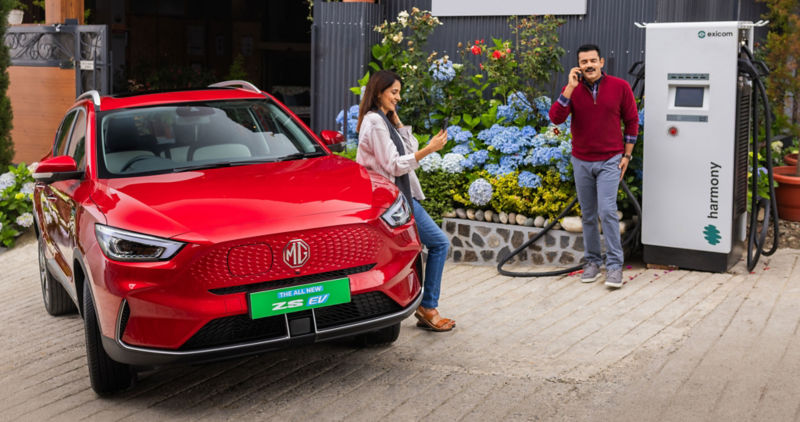Charge up anytime, anywhere.
Explore the world of Public EV charging and the vast network of charging points near you.
From bustling cities to remote highways, we've got the lowdown on where and how to charge your electric vehicle on the go. Charge up and hit the road with confidence!
In addition to this, the Ministry of Power’s guidelines have simplified the installation of charging stations across various locations including offices, residential areas, and public spaces, allowing individuals and corporate firms to set up facilities without needing licenses, provided they adhere to the regulations set by the MoP and Central Electricity Authority of India.
Changing trends in Public Charging

Growing number of public charging stations
The surge in public charging stations parallels the rise of EVs. Accessibility has been greatly enhanced, not just within cities but also for longer journeys, as charging facilities now dot the highways, boosting the appeal of EVs for their convenience.

Community Charging
EV owners are able to find convenient and accessible charging options with community charging stations. Collaborations between the residential communities and charging providers are fostering the installation of stations in residential societies, streamlining the charging process and enhancing overall EV ownership.

Usage of Renewable Energy
Renewable energy sources, such as solar and wind power, are playing an increasingly important role in electric vehicle (EV) charging. Since renewable energy sources produce zero or low emissions, they help reduce air pollution and also decrease our reliance on fossil fuels. The Ministry of New and Renewable Energy has formulated draft guidelines to encourage the establishment of decentralised solar power plants. Therefore, many EV charging stations have adopted solar panels to generate power.

Charging Hubs
Charging hubs provide multiple charging points in a centralized location, especially those designed for fleets or high-traffic areas. These hubs are equipped with fast charging options, making them ideal for busy urban areas or locations where various EVs converge. Charging hubs streamline journey planning by offering a reliable and efficient charging solution in one place.

Destination Charging Infrastructure
These charging stations are installed at locations where people typically spend a significant amount of time, such as hotels, shopping centers, and workplaces. This allows EV drivers to charge while going about their day and it eliminates the need to make separate trips solely for charging. At MG Motor, we have partnered with IONAGE to strengthen the destination charging infrastructure, making intercity travel by electric vehicles a new reality.

Route Planning Services
Sophisticated apps and services now guide EV drivers to nearby charging stations, incorporate charging stops into travel routes, and predict charging times, taking into account traffic and charger availability. This helps making journey planning more efficient and stress-free. The My MG app, for example, provides a seamless navigation experience with comprehensive service features.

Payment and Subscription Models
The EV charging experience is smoother thanks to user-friendly payment and subscription services. Seamless payment methods, such as contactless payments, smartphone apps, or subscription services have simplified the process of accessing and paying for charging, further enhancing the convenience of public charging and the efficiency of journey planning.
Developing the right ecosystem for building EV charging network
Key collaborations between energy providers, automakers, and tech startups are proving to be a great addition when it comes to India's public charging network. To accelerate the adoption of electric vehicles, the Indian government issued revised consolidated guidelines and standards for charging infrastructure on January 14, 2022, ensuring safe, reliable, and affordable charging. In addition, charging network operators across India are tying up with businesses and other automakers to help expand the EV footprint and provide a comprehensive list of services to EV owners.
To understand in detail, let us look at different types of charging network operators:
Pricing strategies for public chargers?
There are many popular pricing models for public EV charging such as time-based pricing or usage-based pricing, where users pay for the duration or usage during the charging session. This model is simple and straightforward, allowing users to conveniently charge their vehicles and pay based on usage of the charging station.







